Home Garden
Sun Shade Sails: The Ultimate Outdoor Comfort Solution
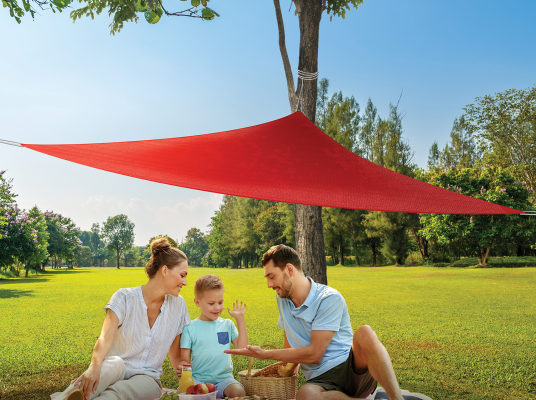
Sun Shade Sails: The Ultimate Outdoor Comfort Solution
In recent years, sun shade sails have become a popular choice for homeowners and businesses looking to enhance their outdoor spaces. These versatile and stylish structures provide excellent protection from the sun’s harsh rays, creating comfortable and functional areas for relaxation and entertainment. Whether you’re looking to improve your backyard, patio, or commercial space, sun shade sails offer an affordable and effective solution. This article explores the benefits, types, installation, maintenance, and top brands of sun shade sails to help you make an informed decision.
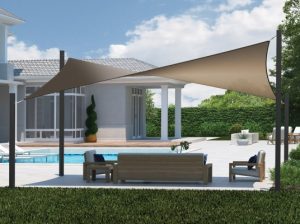
coolaroousa.com
Benefits of Sun Shade Sails
- UV Protection Sun shade sails are designed to block up to 95% of harmful UV rays, providing a safe environment for outdoor activities. This protection is essential for reducing the risk of skin cancer and other sun-related health issues.
- Temperature Reduction By blocking direct sunlight, shade sails can significantly reduce the temperature of the shaded area, making outdoor spaces more comfortable during hot summer months. This cooling effect also helps reduce energy costs by lowering the demand for air conditioning in adjacent indoor areas.
- Aesthetic Appeal Available in a variety of shapes, colors, and designs, sun shade sails can enhance the visual appeal of any outdoor space. They can be customized to match the existing decor and architecture, adding a touch of elegance and modernity.
- Versatility Shade sails can be installed in various configurations to cover different areas, such as patios, decks, pools, playgrounds, and parking lots. Their flexibility allows for creative designs that can accommodate unique layouts and specific needs.
- Durability Made from high-quality, weather-resistant materials, sun shade sails are built to withstand harsh environmental conditions, including strong winds, rain, and UV exposure. This durability ensures long-lasting performance and value for money.
Types of Sun Shade Sails
- Triangular Shade Sails Triangular sails are popular for their sleek and modern look. They are easy to install and can be arranged in overlapping patterns for enhanced visual appeal and coverage.
- Square and Rectangular Shade Sails These shapes provide maximum coverage and are ideal for larger areas. They can be combined with other sails to create a customized shading solution.
- Custom-Shaped Shade Sails For unique spaces and specific design requirements, custom-shaped shade sails can be manufactured to fit any area. These sails offer the most flexibility in terms of design and functionality.
- Waterproof Shade Sails Made from PVC or other waterproof materials, these sails provide protection from both the sun and rain, making them suitable for year-round use.
Installation of Sun Shade Sails
- Planning and Design Before installing a sun shade sail, it’s important to plan the layout and design. Consider the size and shape of the area to be shaded, the direction of the sun, and any obstacles or structures that may affect installation. Professional assistance may be required for complex designs or large installations.
- Choosing the Right Location Select a location that provides optimal shade coverage and allows for proper tensioning of the sail. Ensure that the anchor points, such as walls, posts, or trees, are strong enough to support the sail.
- Installation Steps
-
- Anchor Points: Securely attach the anchor points to the chosen structures. Use stainless steel hardware to prevent rust and corrosion.
- Attaching the Sail: Connect the corners of the sail to the anchor points using turnbuckles or tensioning devices. Adjust the tension to ensure the sail is taut and free of wrinkles.
- Final Adjustments: Check the sail for proper alignment and tension. Make any necessary adjustments to ensure the sail is secure and provides the desired shade coverage.
- Professional Installation For larger or more complex installations, consider hiring a professional to ensure the sail is installed correctly and safely.
Maintenance of Sun Shade Sails
- Regular Cleaning Clean the sail periodically to remove dirt, debris, and stains. Use a mild detergent and a soft brush or sponge. Avoid harsh chemicals or abrasive materials that can damage the fabric.
- Inspecting for Damage Regularly inspect the sail and hardware for signs of wear and tear, such as fraying, fading, or rust. Address any issues promptly to prevent further damage and maintain the sail’s effectiveness.
- Seasonal Adjustments Adjust the tension of the sail as needed to accommodate changes in weather conditions, such as high winds or heavy rain. Remove the sail during extreme weather events to prevent damage.
- Storage If the sail is not intended for year-round use, remove and store it during the off-season. Ensure the sail is clean and dry before storing it in a cool, dry place.
Top Brands of Sun Shade Sails
- Coolaroo Known for their high-quality and durable shade sails, Coolaroo offers a range of sizes, shapes, and colors. Their sails are made from UV-stabilized fabric that resists fading and degradation.
- Shade&Beyond Shade&Beyond provides affordable and reliable shade sails that are easy to install and maintain. Their products are designed for maximum UV protection and durability.
- ColourTree ColourTree offers a variety of shade sails with reinforced corners and heavy-duty hardware for enhanced stability and longevity. Their sails are available in multiple colors and sizes to suit different needs.
- SUNLAX SUNLAX shade sails are known for their high-density polyethylene fabric that provides excellent UV protection and breathability. They offer a wide range of shapes and sizes to fit various outdoor spaces.
- Artpuch Artpuch offers versatile and stylish shade sails that are easy to install and maintain. Their products are designed to withstand harsh weather conditions and provide long-lasting performance.
Competitive Table
| Brand | Material | UV Protection | Waterproof | Shapes Available | Sizes Available | Price Range | Warranty |
| Coolaroo | UV-stabilized fabric | Up to 95% | No | Triangular, Square | Small to Large | $30 – $150 | 5 Years |
| Shade&Beyond | High-density polyethylene | Up to 95% | No | Triangular, Rectangular | Small to Medium | $20 – $100 | 3 Years |
| ColourTree | High-density polyethylene | Up to 95% | No | Triangular, Square | Small to Large | $25 – $120 | 3 Years |
| SUNLAX | High-density polyethylene | Up to 95% | No | Triangular, Rectangular | Small to Medium | $20 – $110 | 3 Years |
| Artpuch | High-density polyethylene | Up to 95% | No | Triangular, Rectangular | Small to Medium | $25 – $100 | 3 Years |
Analysis Table
| Feature | Coolaroo | Shade&Beyond | ColourTree | SUNLAX | Artpuch |
| UV Protection | Up to 95% | Up to 95% | Up to 95% | Up to 95% | Up to 95% |
| Material Quality | High | Medium | High | Medium | Medium |
| Durability | High | Medium | High | Medium | Medium |
| Price | Medium to High | Low to Medium | Medium | Low to Medium | Low to Medium |
| Warranty | 5 Years | 3 Years | 3 Years | 3 Years | 3 Years |
| Shapes Available | Multiple | Limited | Multiple | Limited | Limited |
| Installation Ease | Moderate | Easy | Moderate | Easy | Easy |
| Aesthetic Options | High | Medium | High | Medium | Medium |
Conclusion
Sun shade sails are an excellent investment for anyone looking to improve their outdoor spaces. They offer numerous benefits, including UV protection, temperature reduction, aesthetic appeal, and versatility. With various types and designs available, there is a shade sail to suit every need and preference. By choosing a reputable brand and following proper installation and maintenance practices, you can enjoy the comfort and style of sun shade sails for many years to come. Whether you’re creating a relaxing backyard oasis or enhancing a commercial outdoor area, sun shade sails provide the ultimate solution for outdoor comfort.
Home Garden
Mastering the Sun-Kissed Flavor of Fresh Garden Tomato Sauce
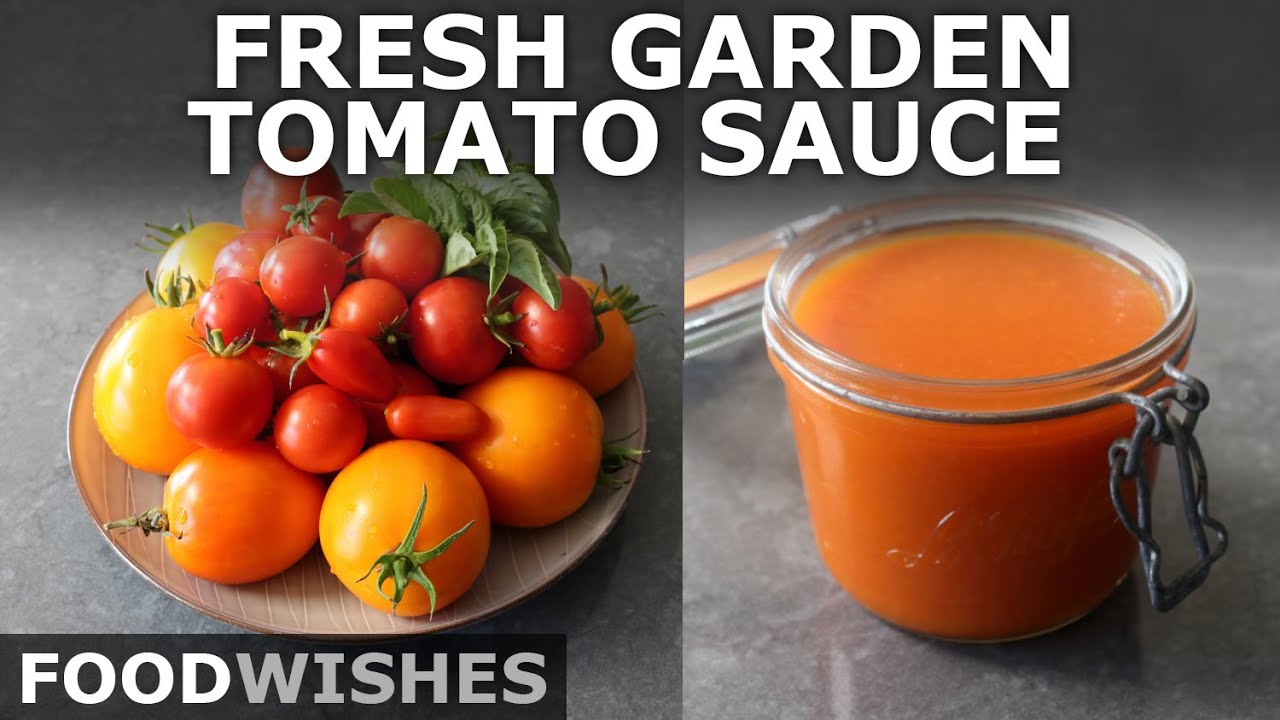
Culinary artistry, where simplicity meets sophistication, mastering the craft of Fresh Garden Tomato Sauce is a journey worth savoring. Benjamin Blueberry, our culinary guide, has unveiled the secrets to transforming ordinary ingredients into a symphony of flavors that dance on the taste buds. As you embark on your own adventure in tomato saucing, remember the essence of sun-kissed flavor lies not just in the ingredients but in the meticulous techniques and passion you infuse into every step. Cultivate, select, peel, and simmer with intention, letting each stage of the process contribute to the crescendo of taste that defines a truly exceptional sauce provided encapsulates the key points, offering a visual roadmap to crafting your culinary masterpiece. Let it be your compass as you navigate the vibrant world of tomato saucing. Whether you’re a seasoned enthusiast or a novice eager to explore, this guide is designed to empower you with the knowledge and skills needed to elevate your culinary creations.
Home Garden
Beat the Heat at Home: Easy Hacks for Summer Comfort
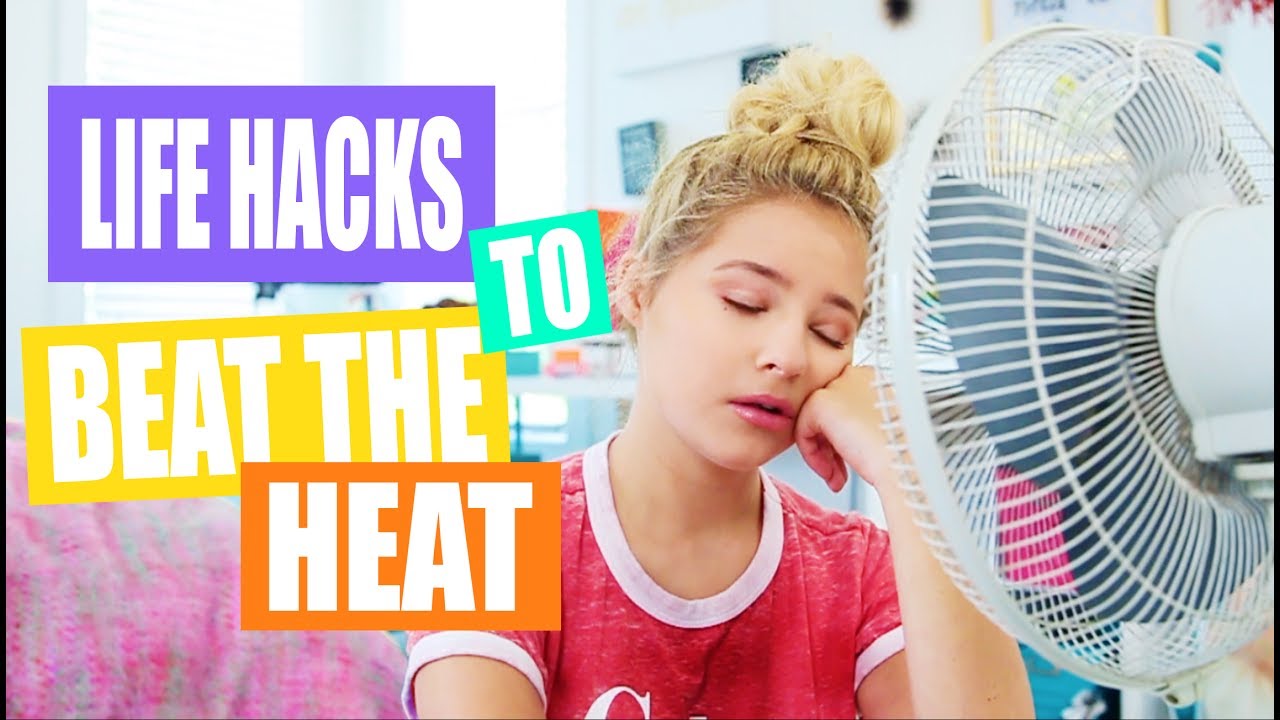
Introduction
Summer days can turn your home into a sauna if you’re not prepared. With rising energy costs and frequent heat waves, keeping cool indoors without breaking the bank is a real challenge. Fortunately, you can beat the heat at home with a few simple, easy summer hacks. From improving airflow and blocking the sun to choosing the right bedding and hydrating the air, these practical tips will help you maintain summer comfort all season long. Let’s dive into ten straightforward strategies to transform your home into a refreshing oasis.
Beat the Heat at Home: Easy Hacks for Summer Comfort
1. Optimize Airflow with Strategic Fan Placement
Fans are your first line of defense against indoor heat. Here’s how to use them effectively:
- Cross-Ventilation: Place one fan near a window facing out and another across the room facing in. This setup pushes hot air out and draws cooler air in.
- Elevate Your Standing Fan: Raise a standing fan on a small stool to circulate air at head height. Cool breezes reach more of the room.
- Ceiling Fans: Set blades to counterclockwise at medium speed to push cool air down.
- DIY Ice Fan Hack: Fill a shallow bowl with ice, place it in front of a fan, and let it blow chilled air around the room.
These airflow tips help beat the heat at home without cranking up the AC.
2. Block Sunlight with Curtains and Reflective Film
Direct sunlight can raise indoor temperatures by several degrees. Use these summer home tips:
- Blackout Curtains: Heavy, light-blocking drapes prevent heat gain and keep rooms up to 10°F cooler.
- Window Film: Reflective or UV-blocking film applied directly to glass reduces glare and heat.
- Outdoor Shades: Install awnings or roll-down shades on sunny windows.
- Insulating Blinds: Cellular or honeycomb blinds trap air and add insulation.
By cutting sunlight before it hits your walls and floors, you maintain summer comfort naturally.
3. Switch to Cooling Bedding and Fabrics
Your bedding choice impacts your nighttime comfort:
- Breathable Sheets: Opt for cotton, linen, or bamboo fabrics that wick moisture and allow air to flow.
- Moisture-Wicking Pillowcases: Look for materials labeled “cooling” or “performance.”
- Lightweight Duvets: Swap heavy comforters for thin cotton or linen covers.
- Chilled Pillow Hack: Store your pillowcases in a sealed bag in the fridge for an instant cool-down at bedtime.
These easy summer hacks help you sleep comfortably during hot nights.
4. Hydrate the Air with DIY Humidifiers and Houseplants
Dry, hot air can feel even warmer. Raise humidity slightly for comfort:
- DIY Humidifier: Place shallow bowls or pans of water near heat sources or windows. As the sun warms them, evaporation cools the room.
- Houseplants: Plants like Boston ferns and peace lilies release moisture into the air. Three to five plants in a room can boost humidity by up to 10%.
- Misting Bottles: Lightly mist the air or your skin for instant relief.
Balanced humidity makes the air feel cooler, enhancing your summer comfort.
5. Cool Down with Refreshing Showers and Foot Baths
Personal cooling keeps you comfortable even if the whole house is warm:
- Lukewarm Showers: Avoid scalding or icy water—lukewarm showers help regulate body temperature.
- Foot Soaks: Fill a basin with cool water and soak your feet for 5–10 minutes. Pressure points on your feet help lower overall body heat.
- Chilled Washcloth: Dampen a washcloth with cold water and drape it across your forehead or neck.
These quick, refreshing rituals are some of the simplest easy summer hacks for beating heat stress.
6. Stay Refreshed with Cool Drinks and Snacks
What you eat and drink affects how you feel in the heat:
- Hydrating Beverages: Drink water, coconut water, or herbal iced tea throughout the day.
- Electrolyte Snacks: Eat watermelon, cucumber, and oranges for natural hydration and vitamins.
- Homemade Popsicles: Freeze blended fruit and yogurt in molds for a healthy, cooling treat.
- Avoid Caffeine and Alcohol: Both can dehydrate you and make you feel hotter.
Fuel your body with water-rich foods to maintain internal comfort.
7. Reduce Indoor Heat Sources
Cut down on appliances and activities that generate heat:
- Lights Off: Replace incandescent bulbs with LED lights and turn off unused fixtures.
- Unplug Devices: Electronics and chargers draw power and heat even when idle.
- Cook Outside: Use a grill or slow cooker to avoid heating up the kitchen.
- Laundry Timing: Do laundry in the early morning or late evening when temperatures dip.
Lowering internal heat production is a critical part of summer home tips.
8. Insulate and Seal Drafts
Proper insulation keeps cool air in and hot air out:
- Door Draft Stoppers: Place a rolled-up towel or foam tube at the base of doors to block warm drafts.
- Window Seals: Apply weatherstripping to close gaps around window frames.
- Attic and Wall Insulation: Ensure your home has adequate insulation to reduce heat transfer.
- Rugs and Carpets: Covering bare floors adds an extra layer of insulation and can keep feet cool or warm as needed.
Good sealing and insulation are long-term summer comfort investments.
9. Embrace Nighttime Cooling
Use cooler evening air to your advantage:
- Open Windows: After sundown, open windows on opposite sides of the house to create a cross-breeze.
- Window Fans: Place fans in windows to draw in cooler outside air and push out warm indoor air.
- Thermal Mass: If you have tile or concrete floors, leave them bare to absorb cool night air and stay cool during the day.
Nighttime strategies help maintain a lower base temperature for daytime comfort.
10. Upgrade with Smart Home Tools
Tech solutions can make cooling more efficient:
- Programmable Thermostat: Set it higher when you’re out and cool down just before you return.
- Smart Plugs and Fans: Use voice assistants or apps to turn fans on and off remotely.
- Ceiling Fan Timers: Automate speed changes to match sleep cycles or afternoon heat peaks.
- Energy-Efficient AC Units: If you need air conditioning, choose models with high SEER ratings and regular maintenance schedules.
Smart tools optimize comfort and save on energy bills, rounding out your easy summer hacks.
Comparative Table: Cool Down Hacks at a Glance
| Hack | Description | Benefits |
|---|---|---|
| Blinds or Blackout Curtains | Block sunlight and prevent heat gain during the day. | Reduces reliance on AC, saves energy. |
| DIY Air Cooler (Ice & Water + Fan) | Creates a cool breeze by evaporating water. | Affordable, readily available materials. |
| Strategic Towel Trick | Cools surrounding air through evaporation. | Simple to implement, uses minimal resources. |
| Nighttime Ventilation | Allows cooler nighttime air to circulate. | Energy-efficient cooling strategy. |
| Light Bedding | Promotes breathability and comfort during sleep. | Improves sleep quality on hot nights. |
| Strategic Cooking | Reduces heat generated in the kitchen. | Maintains a cooler indoor environment. |
| Cool Shower | Lowers body temperature quickly. | Refreshing and invigorating. |
Conclusion
Beating the heat at home this summer doesn’t require a hefty AC bill. By optimizing airflow, blocking sun, and choosing cooling bedding, you create a comfortable base. Simple steps—like DIY humidifiers, refreshing showers, and hydrating snacks—keep your body cool, while sealing drafts and smart home tools maintain a fresher indoor climate. Embrace these easy summer hacks to enjoy summer comfort without sacrificing energy efficiency or budget. With thoughtful planning and a few small changes, you can transform your home into a cool, relaxing retreat all season long.
Home Garden
Create a Home Office You Love: 10 Simple Steps
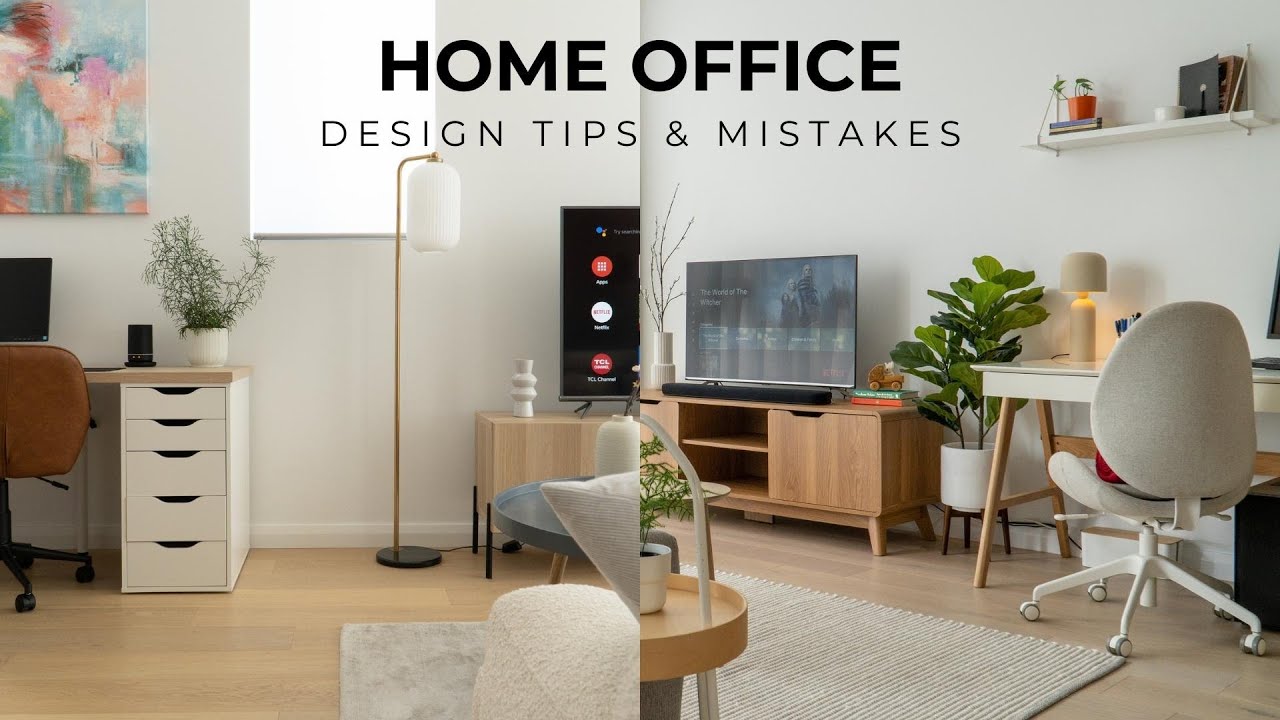
Introduction
Working from home doesn’t have to mean squinting at a laptop on the couch. A well-designed home office can boost productivity, improve comfort, and even spark creativity. Whether you have a spare room or a corner in your living area, creating a home office you love starts with thoughtful planning and personal touches. From choosing the right desk and chair to adding plants and proper lighting, this guide offers ten simple steps to transform any space into an inspiring, functional workspace you’ll enjoy daily.
Top 10 Simple Steps to Create a Home Office You Love

Image by: Yandex.com
1. Choose the Perfect Location
The first step in your home office setup is finding the right spot:
- Spare Room or Nook: A quiet room is ideal, but a corner of the living room or bedroom can work too.
- Natural Light: Position your desk near a window to reduce eye strain and boost mood.
- Minimal Distractions: Avoid high-traffic areas, TV noise, or household chores within sight.
Selecting the right location lays the foundation for focus and creativity.
2. Invest in Ergonomic Furniture
Comfort is key when you spend hours at your desk:
- Adjustable Chair: Choose one with lumbar support, adjustable height, and armrests.
- Right-Height Desk: Your elbows should form a 90° angle when typing. Consider a sit-stand desk if you want to alternate positions.
- Monitor Setup: Place the top of your screen at eye level, about an arm’s length away.
Good ergonomics prevent back pain and fatigue, helping you stay productive longer.
3. Optimize Lighting for Focus
Proper lighting reduces eye strain and creates a welcoming atmosphere:
- Layered Lighting: Combine overhead lights, task lamps, and ambient sources.
- Task Lamp: A desk lamp with adjustable brightness and color temperature helps with reading and detail work.
- Natural Light: Use sheer curtains to diffuse harsh sunlight and position your desk to avoid glare.
Balanced lighting keeps you alert and reduces headaches.
4. Establish Smart Storage Solutions
Clutter can kill creativity. Keep your office tidy with smart storage:
- Shelving Units: Floating shelves or bookcases for books, files, and décor.
- Desk Organizers: Drawers, trays, and pen holders keep small items in place.
- Baskets and Boxes: Labelled containers hide cables, chargers, and office supplies.
- Cable Management: Use clips, sleeves, or under-desk trays to keep cords out of sight.
A clean workspace helps you think clearly and find everything you need quickly.
5. Personalize with Inspiring Décor
Add personality to your office to make it feel inviting:
- Wall Art: Hang prints, posters, or framed photos that motivate you.
- Color Palette: Choose soothing tones like soft blues or greens, or energizing hues like yellow accents.
- Plants: Low-maintenance greenery—succulents, snake plants, or pothos—improves air quality and mood.
- Textiles: A cozy rug or throw pillow adds comfort and warmth.
A personalized space feels more like “you,” making work more enjoyable.
6. Create a Functional Layout
Arrange furniture and tools for maximum efficiency:
- Primary Work Zone: Place your desk, chair, and monitor at the center.
- Secondary Zones: Nearby shelves or drawers for reference materials and supplies.
- Movement Space: Ensure enough room to stretch and move without obstacles.
- Meeting Area: If you do video calls or host clients, include a small seating area or backdrop.
A thoughtful layout minimizes distractions and makes everything accessible.
7. Incorporate Technology Thoughtfully
Technology powers modern work, but too many devices can be overwhelming:
- All-in-One Printer: Saves desk space and reduces cable clutter.
- Wireless Peripherals: A wireless keyboard and mouse free up desk real estate.
- High-Speed Internet: Position your router nearby or use an ethernet cable for stable connections.
- Headset or Speakers: Noise-canceling headphones or quality speakers improve focus and call quality.
Invest in tools that enhance productivity without overloading your space.
8. Develop Daily Routines and Zones
An organized office pairs well with structured routines:
- Morning Ritual: Start with a quick desk tidy, a cup of tea, and a review of your to-do list.
- Time Blocks: Schedule focused work sessions (e.g., Pomodoro technique) with short breaks.
- End-of-Day Cleanup: Spend five minutes clearing your desk and planning tomorrow’s tasks.
- Zones for Tasks: Dedicate areas for specific activities—computer work, reading, brainstorming—so your brain associates locations with actions.
Consistent routines help you stay on track and maintain a clean workspace.
9. Balance Productivity with Wellness
Your home office should support both work and well-being:
- Movement Reminders: Set alarms or use apps that prompt you to stand, stretch, or walk every hour.
- Water Station: Keep a water bottle within reach and a small snack like nuts or fruit.
- Mindfulness Corner: A small mat or cushion for quick breathing exercises or meditation.
- Break Area: A comfortable chair or window seat where you can rest your eyes and recharge.
Combining work zones with wellness areas prevents burnout and keeps you energized.
10. Evolve Your Space Over Time
A great home office grows with you:
- Seasonal Updates: Switch decor elements—cushions, wall art, or desk accessories—to refresh the look.
- Tech Upgrades: As your needs change, add new tech like a second monitor or improved lighting.
- Feedback Loop: Every few months, ask yourself: What’s working? What’s distracting? Then adjust.
- Expand When Needed: If your family needs the office space, consider fold-away desks or dual-purpose furniture.
An adaptable office stays relevant and continues to inspire your best work.
Conclusion
Creating a home office you love means blending ergonomics, aesthetics, and functionality in a space that reflects your style and supports your goals. Start by choosing a quiet, well-lit location and investing in a comfortable chair and desk. Tackle storage to reduce clutter, personalize with art and plants, and arrange a layout that makes work easy. Incorporate the right technology, establish daily routines, and add wellness zones to keep energy high. Finally, revisit and refresh your setup as your needs evolve. Follow these ten steps for a productive workspace you look forward to entering each day.
-
Business2 years ago
Cybersecurity Consulting Company SequelNet Provides Critical IT Support Services to Medical Billing Firm, Medical Optimum
-
Business2 years ago
Team Communication Software Transforms Operations at Finance Innovate
-
Business2 years ago
Project Management Tool Transforms Long Island Business
-
Business2 years ago
How Alleviate Poverty Utilized IPPBX’s All-in-One Solution to Transform Lives in New York City
-
health2 years ago
Breast Cancer: The Imperative Role of Mammograms in Screening and Early Detection
-
Sports2 years ago
Unstoppable Collaboration: D.C.’s Citi Open and Silicon Valley Classic Unite to Propel Women’s Tennis to New Heights
-
Art /Entertainment2 years ago
Embracing Renewal: Sizdabedar Celebrations Unite Iranians in New York’s Eisenhower Park
-
Finance2 years ago
The Benefits of Starting a Side Hustle for Financial Freedom

































